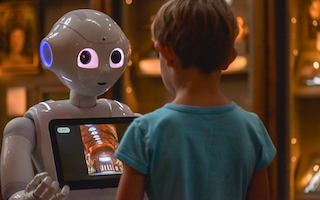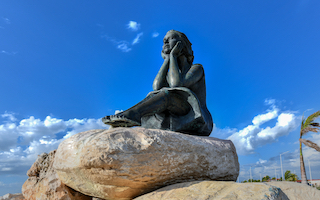The events of the last few years have demonstrated time and again that the world is rapidly changing, and with it, the cultural heritage sector. Out of mounting global uncertainties rises an urgent need to reconsider how strategic planning can help us better prepare for the future. Within this context, we explore the concept of strategic foresight and highlight ICCROM’s recent investigation into the future of cultural heritage.
Recognizing the value of foresight
Conventional thinking about the future tends to assume a ‘business-as-usual’ mentality, extrapolating likely trajectories from past or current trends. By contrast, strategic foresight is an approach to identifying potential changes in the longer term and exploring their implications for the future. Beyond a typical quarterly or annual purview, foresight practices can target anywhere from 10 to upwards of 50 years ahead, effectively providing organizations with a toolbox for developing forward-thinking strategies that anticipate and even shape coming trends.
Over the past several years, foresight has garnered increasing attention on the world stage, particularly in government and industry, and most recently at the COP26 summit, where there was a call for better climate foresight. It is also gaining traction in the cultural sector — for example, the Smithsonian Arts and Industries Building’s current FUTURES exhibition invites visitors to engage in foresight thinking and imagine desired futures for a better world.
We see enormous value in applying strategic foresight to how we think about cultural heritage and the contribution it can make to people’s lives in the decades to come if properly safeguarded. As an organization charged with promoting conservation in all corners of the globe, we have an obligation to proactively identify external forces and address their potential impacts, and also put forward a compelling vision for a future in which the benefits of cultural heritage are fully harnessed. Through foresight, we can begin to form this bigger picture.
The horizon scanning project
Our Strategic Planning Unit recently organized a horizon scanning project for the international heritage sector. Horizon scanning is a recognized foresight technique for gathering intelligence about the future by looking for signals of change in the external environment. For this exercise, we assembled an international team of 17 consultants from universities, government, and heritage institutions across world regions, representing diverse fields of expertise from heritage science to cultural economics to information technology.
Looking to a 15-year horizon, the ‘scanners’ were tasked to research and identify potential future trends that might impact cultural heritage, and describe their implications for the sector. To ensure a breadth of scope, scan topics were organized along the PESTLE framework for situational analysis of political, economic, social, technological, legal and environmental factors, with an additional category created for trends specific to the conservation sector. In total, this exercise produced more than 60 one-page scan reports describing potential future trends, which were collated and shared with the participants for their review.
The workshop
On 23 and 26 November 2021, project participants convened over Zoom for two three-hour workshops to gather the key messages to come out of the scan reports. On the first day, participants shared their overall reflections and collectively identified the priority themes affecting the future of cultural heritage. The second workshop employed these findings to define key opportunities and challenges moving forward, and develop some preliminary recommendations for ICCROM and the wider heritage sector.
In these two fruitful sessions, the participants drew on their respective knowledge and expertise to deliberate over a wide range of topics. Of these, wellbeing economic models, participatory community action, and digital technologies were identified as some of the key tools for the heritage sector to mitigate harm and advance positive social change.
A notable takeaway from the workshop was the value of foresight itself as a practice. Prompted to reflect on the horizon scanning process, participants overwhelmingly expressed that they found it eye-opening and transformative. Several considered the possibility of bringing similar foresight activities to their home countries or institutions.
Preparing for the future
With valuable insights from the participants, a statement of purpose was developed to capture and communicate the main findings of the workshop in a short, clear message. This can serve as both a vision and a call to action encouraging the heritage sector to harness key opportunities to tackle priority challenges coming over the horizon. Accordingly, it will help orient further thinking on where, as a sector, we can most effectively focus our efforts to achieve this vision — in the case of ICCROM, as we seek to inform the development of our next Strategic Directions. The statement of purpose reads as follows:
Conclusion
For us, this venture into foresight through the horizon scanning project has been a learning process that has proven both productive and enlightening. We are now working to wrap up the horizon scan study and share its results in the coming months. While it marks only the first step in a broader initiative to trial foresight methods as part of strategy development at ICCROM, a picture is already starting to take shape of where the heritage sector may be headed in the years to come and how we as an organization can stay ahead of the curve as it evolves. What’s also clear is that, while no one can predict the future, with foresight we can engage in smarter, more informed strategic planning, which in these uncertain times, is an advantage none of us can afford to pass up.



